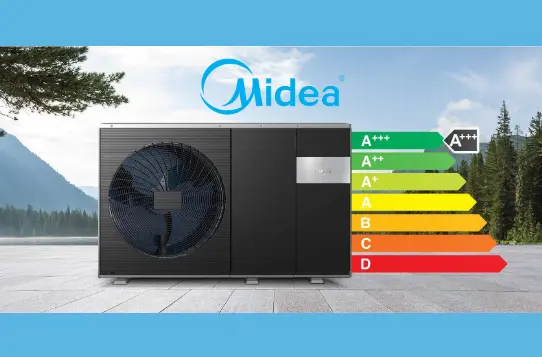
Introduction:
Vaillant produces highly efficient and reliable heat pumps, making them popular for home heating systems. However, they can experience issues that trigger fault codes. These fault codes can help diagnose problems with the unit, allowing homeowners and technicians to identify and resolve the issues quickly.
In this comprehensive guide, we’ll explain common Vaillant heat pump fault codes, particularly for models like the Vaillant aroTHERM Plus. We’ll cover what each code means, possible causes, and how to fix them. If your Vaillant heat pump is displaying an error, keep reading for expert troubleshooting tips.
What Are Vaillant Heat PumpFault Codes?
The Vaillant aroTherm Plus heat pump has a built-in diagnostic system that displays fault codes whenever something goes wrong. These codes can help you pinpoint problems, reducing repair time or allowing you to resolve the issue yourself. Some faults are relatively easy to fix with basic troubleshooting, while others require professional servicing.
Common Vaillant Heat Pump FaultCodes Explained
Here are some of the most common Vaillant aroTherm Plus fault codes, their meanings, and possible solutions:
- F.022 - Water Pressure Too Low: This code indicates that a pressure drop is present in the heating circuit. Top up the system with water and check for leaks.
- F.042 - Coding Resistor Fault: The coding resistor might be missing or it might be incorrectly installed. Inspect its placement and replace if necessary.
- F.514 - Compressor Inlet Temperature Sensor Fault: This usually means the sensor is faulty or disconnected. Reconnect or replace the sensor.
For a full breakdown of all Vaillant fault codes, including causes and remedies, refer to the detailed fault code table below.
| Code | Meaning | Cause | Remedy |
|---|---|---|---|
| F.022 | Water pressure too low | Pressure loss in the building circuit due to leakages or air pockets; Building circuit pressure sensor defective | Check for leaks; Top up with water, purge; Verify sensor wiring; Replace pressure sensor if needed |
| F.042 | Fault: Coding resistor | Coding resistor damaged or not set | Check coding resistor position; Replace if needed |
| F.073 | Sensor fault: Build. circ. pressure | Sensor not connected or input short-circuited | Check and replace the sensor; Replace cable harness |
| F.094 | Fault: Vortex | Volume flow sensor not connected or sensor input short-circuited | Check and replace sensor; Replace cable harness |
| F.103 | Fault: Spare part ident. | Incorrect control PCB installed on the outdoor unit | Install the correct PCB |
| F.514 | Sensor fault: Compr. inlet temp. | Sensor not connected or input short-circuited | Check and replace sensor; Replace cable harness |
| F.517 | Sensor fault: Compr. outlet temp. | Sensor not connected or input short-circuited | Check and replace sensor; Replace cable harness |
| F.519 | Sensor fault: Building circuit return temp. | Sensor not connected or input short-circuited | Check and replace sensor; Replace cable harness |
| F.520 | Sensor fault: Building circuit flow temp. | Sensor not connected or input short-circuited | Check and replace sensor; Replace cable harness |
| F.526 | Sensor fault: EEV outlet temp. | Sensor not connected or input short-circuited | Check and replace sensor; Replace cable harness |
| F.546 | Sensor fault: High pressure | Sensor not connected or input short-circuited | Check the sensor and replace if necessary; Replace cable harness |
| F.582 | Fault: EEV | EEV not connected correctly or cable break | Check plug connections; Replace EEV coil if required |
| F.585 | Sensor fault: Capac. outlet temp. | Sensor not connected or input short-circuited | Check and replace sensor; Replace cable harness |
| F.703 | Sensor fault: Low pressure | Sensor not connected or input short-circuited | Check sensor and replace if necessary; Replace cable harness |
| F.718 | Fan unit 1: Fan blocked | No confirmation signal from fan | Check air route; Remove blockages |
| F.729 | Compressor outlet temperature too low | Compressor outlet temperature is lower than 0°C for more than 10 minutes | Check high-pressure sensor; Inspect EEV operation; Check for refrigerant overfilling |
| F.731 | High-pressure switch open | Refrigerant pressure too high | Purge building circuit; Inspect pressure sensor; Reset manually |
| F.732 | Compressor outlet temperature too high | Application limits exceeded | Check compressor inlet/outlet sensors; Inspect refrigerant volume |
| F.733 | Evaporation temperature too low | Insufficient air volume flow through the outdoor unit's heat exchanger | Check fan unit for dirt; Inspect EEV operation; Check refrigerant volume |
| F.734 | Condensation temperature too low | Heating circuit temperature too low | Check EEV operation; Inspect refrigerant volume; Check 4-port diverter valve |
| F.735 | Evaporation temperature too high | Environment circuit temperature too high | Inspect system temperatures; Check refrigerant volume |
| F.737 | Condensation temperature too high | Refrigerant circuit overfilled | Inspect refrigerant levels; Check system sensors and pressure switch |
| F.741 | Building circuit: Return temp too low | Return temperature falls below 13°C during de-icing | Ensure minimum system volume; Activate backup heater if needed |
| F.752 | Fault: Frequency converter | Internal electronics fault in inverter PCB | Check power supply cables; Verify inverter operation |
| F.753 | Connection fault: Freq. converter | No communication between the frequency converter and control PCB | Inspect cable harness; Replace if needed |
| F.755 | Fault: 4-port valve position incorrect | Incorrect 4-port diverter valve position | Inspect diverter valve coil and cable harness |
| F.774 | Sensor fault: Air inlet temp | Sensor not connected or input short-circuited | Inspect and replace sensor; Replace cable harness |
| F.785 | Fan unit 2: Fan blocked | No fan rotation detected | Check fan for blockages; Remove obstructions |
| F.788 | Building circuit: Pump fault | High-efficiency pump detected fault | Switch off heat pump; Inspect pump operation |
| F.817 | Freq. converter fault: Compressor | Compressor or frequency converter defect | Measure compressor winding resistance; Check cable harness and plug connections |
| F.818 | Freq. converter fault: Mains voltage | Incorrect mains voltage for operating the frequency converter | Measure mains voltage; Correct voltage if needed |
| F.819 | Freq. converter fault: Overheating | Internal overheating of frequency converter | Allow cooling; Check air flow and fan operation |
| F.820 | Connection fault: Building circuit pump | Pump not sending a signal back to the heat pump | Check the cable; Replace the pump if needed |
| F.823 | Hot gas temperature switch open | Hot gas thermostat shut down the heat pump due to high temperature | Check EEV; Replace dirt filter in the refrigerant circuit |
| F.825 | Sensor fault: Capac. inlet temp. | Refrigerant circuit temperature sensor not connected or short-circuited | Check and replace the sensor if required |
| F.1117 | Compressor: Phase failure | Defective fuse or incorrect electrical connections | Check fuse and electrical connections; Verify mains voltage |
| F.9998 | Connection fault: Heat pump | eBUS cable not connected or connected incorrectly | Check eBUS cable connection between power supply PCB and control PCB |
How to Troubleshoot VaillantHeat Pump Faults
Here is a step-by-step guide for diagnosing and fixing your Vaillant heat pump:
- Check the Display Panel: Look at the fault code displayed on the control screen.
- Consult the Manual: Use the manual (available online if you can't find a copy) or our fault code table for reference.
- Inspect the Unit: Check visible components such as wiring, sensors, and the pressure gauge.
- Reset the Heat Pump: Turn off the unit, wait five minutes, and restart it.
- Call a Professional: If the fault persists, contact a certified heating engineer.
Why Is My Vaillant Heat Pump Not Working?

Several factors can cause a Vaillant heat pump to stop working:
- Low Water Pressure: If the pressure in your heating system is too low, the pump won’t operate correctly. Add water to the system until the pressure gauge is back within the recommended range, as per the installation manual.
- Sensor Errors: Faulty temperature or pressure sensors can disrupt the heat pump’s performance.
- Electrical Issues: Problems with power supply can shut down the unit; such as faulty wiring or a tripped breaker, .
- Compressor Faults: A damaged compressor can cause major system failures and may need professional repair.
When to Call a Professional
While some Vaillant heat pump faults can be fixed at home, more complex issues require expert help. If your unit displays critical fault codes like F.819 (Frequency Converter Overheating) or F.823 (Hot Gas Temperature Switch Open), call a qualified heating engineer immediately.
Proactive Maintenance Tips for the Vaillant aroTherm Plus
Preventive maintenance can reduce system faults and extend your heat pump’s lifespan. Follow these tips:
- Schedule an Annual Maintenance: Book an annual inspection with a certified technician. Contact us at hello@dwellow.co.uk if you don't have a service plan and would like to sign up for one.
- Check for Debris: Ensure the outdoor unit is free from leaves, dirt and and other potential debris.
- Inspect System Pressure: Regularly check the water pressure levels.
- Monitor Performance: Try to keep an eye on heating efficiency and electricity usage of the unit.
Frequently Asked Questions(FAQs)
Q: How do I reset my Vaillant heat pump? A: Turn off the heat pump and then wait five minutes; and then restart the unit again. If the fault persists, contact a professional.
Q: What does F.022 mean on a Vaillant heat pump? A: It indicates low water pressure in the heating circuit. Top up the system and check for leaks.
Q: Why is my heat pump displaying F.731? A: This code points to a high-pressure switch fault.Inspect the pressure sensor and purge the system if necessary.
Q: Can I fix Vaillant fault codes myself? A: Some minor issues like topping up water pressure or resetting the unit can be fixed at home. However, complex faults like compressor failures should be handled by a technician.
Q: How can I prevent faultcodes on my Vaillant heat pump? A: Schedule regular maintenance, keep the unit clean, and inspect system pressure regularly.
Conclusion
By understanding the fault codes of the aroTherm Plus, you can troubleshoot common issues yourself, and then you can determine whether you need to call a professional. Use our comprehensive fault code table for quick reference and stay on top of your system’s maintenance to ensure year-round comfort.
Looking for a new boiler quote?
Try our free quote tool. You'll have your personalised quote in under a minute.















